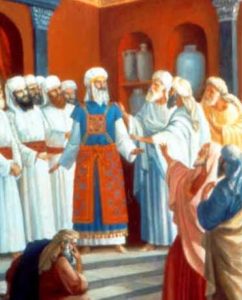In this class, we explore the esoteric knowledge of King Solomon encoded in his three books: Kohelet, Mishlei, and Shir haShirim. Along the way, we answer big questions like: What is the Seal of Solomon? Why did King Solomon take on hundreds of wives and what did he conclude about marriage? What scientific knowledge did Solomon uncover? What are the 50 Gates of Understanding? Plus: the great secret behind El Shaddai, the mystical reason for the exile of the Jewish people, and incredible revelations from the ancient mystical text Sefer haTemunah.
For more on the Seal of Solomon and the Star of David, see here.
See also ‘Things You Didn’t Know About King Solomon’.
For more on Sheddu and Cherubs, see ‘The Guardian Angels and Hybrid Beasts Known as Cherubs’ in the second volume of ‘Garments of Light’.

